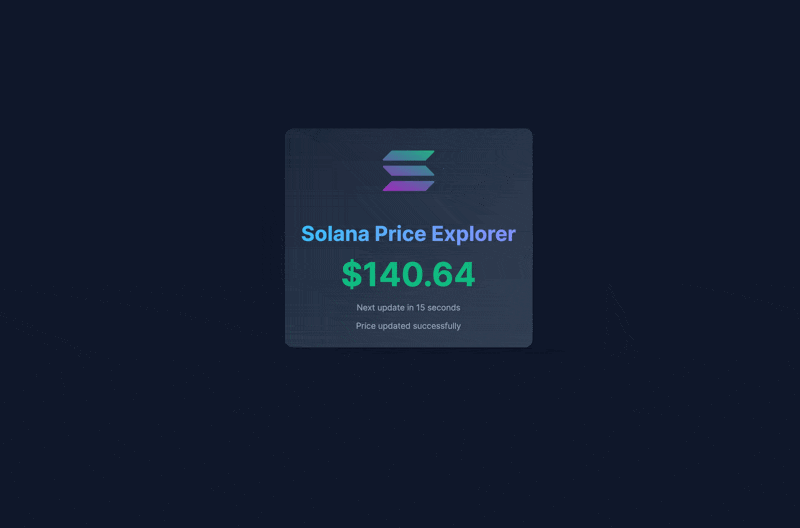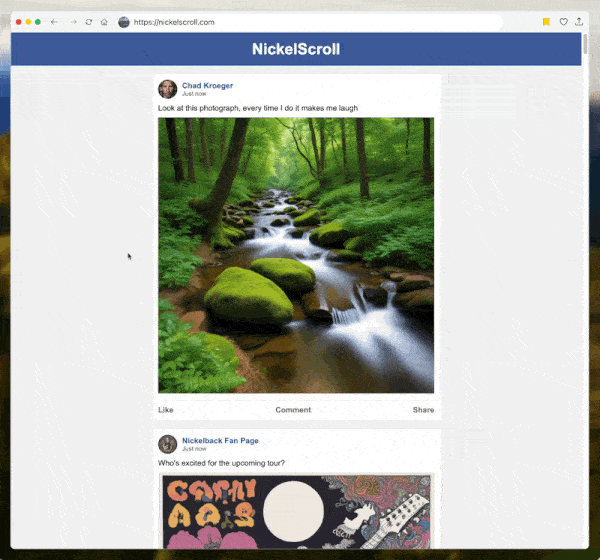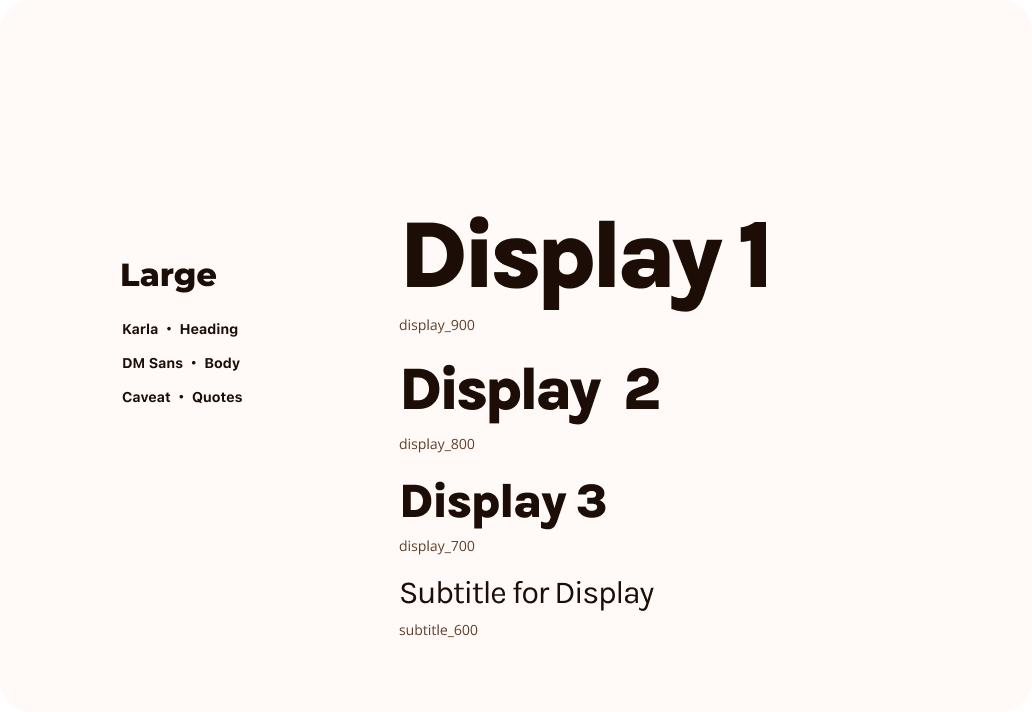How to craft a tokenised typography system for your design system.
This is one trip you’ll want to take.

The web has gotten flat, boring, and transactional.
So, if you’re like me, you’re ready for what’s next. And yeah, AI is great so far — I’m at a point where pretty much everything I do personally and professionally is enhanced by ChatGPT or another AI tool.
But it gets better. We’ve just reached an incredible inflection point with simulated AIs, where you just type in a URL, and AI spins up entire pages. Sure, it’s hallucinating, but if you get caught up in that minor detail, you’re missing the point:
We now can speak worlds into existence.
We designers aren’t just dreamers; we’re doers. This next-level AI technology gives us the juice to let our creativity run wild. While the initial output may be like an acid trip of a digital experience, this technology empowers you to play with possibilities that can become real, industry-changing breakthroughs.
So, come down the rabbit hole with me in this article, and I’ll show you what I mean.

The geeks always win
First, a trip down memory lane. Maybe you were like me, coding your butt off for fun and sport.
I used to love trolling ProgrammableWeb (RIP), checking out which platforms had just opened access to their APIs so we could connect the hottest new platforms and data sources and mix and match experiences.
It was the dawn of Web 2.0, and it was epic.
Perhaps you also figured out quickly that goofing around online on MySpace or the early Twitter and Facebook APIs was actually a skill that could help earn you some cash.
That’s what created an edge for me back in the day. The thing that I loved doing became the thing people paid me for — my friend was in a band, I designed their MySpace page, and then I started getting nightclubs and promoters asking for my help.
CONFESSION: I paid for my first BMW with the money I made selling custom MySpace pages and club eFlyers.
WebSim.ai, a free, open-source social network, brings back those raw, playful, ultra-creative vibes. It’s like a magic browser that you can type in anything, and instead of getting a 404 or a vanilla website, you get something like you are tripping on mushrooms.
Imagine the interactive essence of MySpace, the community-driven approach of Reddit, and the simplicity of Craigslist — all blended into one. Powered by Claude 3.5 Sonnet Anthropic’s latest LLM, it lets you create pages effortlessly. It’s the coolest no-code tool I’ve seen for generating a new internet, and it’s open to everyone.
Important note here: I get nothing from plugging Websim. But I am nostalgic for the days when the most innovative tools were free and open source. I always like to share the inside track with fellow designers because we can use our imagination to make incredible things a reality.
Endless creative possibilities (but go beyond the surface)
What makes Websim genuinely fascinating is its ease of use. You simply type in a URL, and it starts spinning up whole pages. The AI “hallucinates” content, creating a whimsical and playful experience. It’s like Minecraft for adults — engaging, creative, and full of surprises.
For example, I built a nostalgic OS X Tiger recreation and even a Miss Rachel viewer for my kid, which randomly pulls real Miss Rachel videos.

If this seems like a waste of time, it’s not. (Especially if you’re the parent of a toddler; we know cool distractions are never a waste of time 😉.) It’s excellent practice building engaging applications in literally seconds, then hooking them up to real APIs and pulling in real data.
So, the playful interaction is just the surface. As an entrepreneur, I see deeper potential. A simulated AI like Websim, which empowers you to “hypersurf” (exploring the internet via intelligent hyperlinks adapted to your interests, curiosity, and intentions), will revolutionize how we build and iterate web applications.
For example, I built a Solana price visualizer. Before LLMs, this would take me days or weeks to design, build, and deploy. Now, it took me five minutes.

In other words, it’s like having a digital canvas where you can create fully functional apps and websites with real-time content and API integrations.
The potential is vast, from simple, fun projects (like this, which is great if you don’t have time to go to the beach) to sophisticated applications. This is the future of web design and creativity, and it’s happening now.
The business edge
You might wonder how such an advanced tool sustains itself without charging users. This brings us to the strategic brilliance behind Websim. Figma’s CEO, Dylan Field, is apparently backing this venture, which makes sense given the financial and technical demands of running large language models. It’s also a great example of his actualizing the mission to eliminate the gap between imagination and reality.
Here’s what Dylan said recently:
“But one thing is clear: the future of the internet is one of intelligent, adaptive information spaces that respond to our unique needs and curiosities. With Websim, we are just scratching the surface of what’s possible when we reimagine the web as a living, responsive knowledge medium.”
In other words, the real value lies in the data being generated.
Data is the new oil, especially in relation to AI and LLMs. And the quality of the data is going to be your moat. The more personal, the better.
Figma, known for its innovative design tools, has been buying up AI companies for a while — for example, Diagram — enhancing their ability to spin up interfaces quickly. Similarly, Websim is building the scaffolding for a new internet, gathering valuable data on user behavior and creation patterns.
So, if you own a platform like Websim, your user acquisition costs are essentially what you’re paying for the Cloud. And I’d imagine that as you get all this data, you’ll have the inside edge in understanding who’s creating what, how they’re making it, and the juice necessary to train other models to inspire future roadmaps.
The implications are massive:
- Where some see a cheesy website, I see improvements in the defense industry.
- Where some chalk up simulated AI to just another no-code website builder tool, I see the acceleration of the science community.
- Where some see a gimmick, I see the future of industry.
Used correctly, multi-modal LLMS can traverse ancient and current wisdom and knowledge to simulate and explore new realms and possibilities. (Of course, that’s the caveat: “used correctly” — just calling that out.)
And here’s another critical thing I see…
Democratizing creation and discovery
… Websim democratizes creativity, much like Steve Jobs did when he launched the Macintosh 128K and the first graphical interface.

Of course, Jobs and Apple went on to continuously spread the gift of making art to the masses. iPhone’s built-in digital camera springs to mind, as that’s what made everyone a creator.
Every innovation has an inflection point, and those inflection points unlock new possibilities. What I like about Websim is that, on the surface, I’m just creating things and enjoying myself.
By lowering the barriers to entry, it empowers anyone to create and iterate, regardless of technical skill.
For the record, democratized creativity (and world-building, for that matter) is nothing new in the online games arena. The Sims has been around for nearly a quarter-century, and Roblox currently has over 70 million daily active users.

What’s the common denominator? These simulation games are FUN. (And lucrative, to the tune of billions in virtual transactions and real-world currency.)
They win by appealing to our child-like sense of wonder, imagination, and creativity — an irresistible mix.
But it doesn’t just stop there. We’re in the era of interacting with machines, and new behaviors are emerging.
Like the recent shift from classic Google search to LLM-powered answer engines like Perplexity.
Their latest feature is basically creating AI-generated Wikipedia pages, all constructed from people’s questions and curiosity.
AI simulations are driving everything from advanced manufacturing to drug discovery, and the underlying technologies behind all of this are staring us right in the face.
Back to the future
This brings me to Websim’s secret sauce: nostalgia.
You know nostalgia works when the most-talked-about 2024 July 4th blockbuster release is Beverly Hills Cop: Axel F, which, of course, I watched with my wife as soon as it came out. (It wasn’t perfect, but I loved it because it was a throwback to the Beverly Hills Cops movies I watched with my dad when I was a little kid.)
Websim knows that, too. Case in point: its logo:

It’s like early eBay meets Toys “R” Us with a subtle throwback to the OG Google logo.
Convergence is the key concept here — a convergence of nostalgia and novelty. Stats bear this out: even Gen Z, 12 to 29-year-olds, prefer classic brands, and 81% say they love it when brands bring back products and trends from their childhood.
But I’d say that’s pretty universal regardless of how old you are.
Nostalgia is the spice of life, evoking a range of memories and emotions (usually more positive as time goes on). So, this blend of novelty and nostalgia is more than just a gimmick — it’s a potent edge.
We crave connections to the past, especially in our rapidly changing digital world.
Websim taps into this desire, providing a modern twist on the old-school internet experience. It’s a convergence of the familiar and the new, offering a refreshing way to explore digital creativity.
Infinite Nickelback, anyone?

And one more nostalgic reference: while today, Websim is a glimpse into the future of the internet, someday in the not-too-distant future, it will be a retro tool.
But today, it’s still fresh and innovative, so take a chance and have some fun. Only by simulating progress can we see what the world can truly be. Give it a whirl!
You’re not hallucinating: simulated AIs are the future of internet business was originally published in UX Collective on Medium, where people are continuing the conversation by highlighting and responding to this story.


Leave a Reply